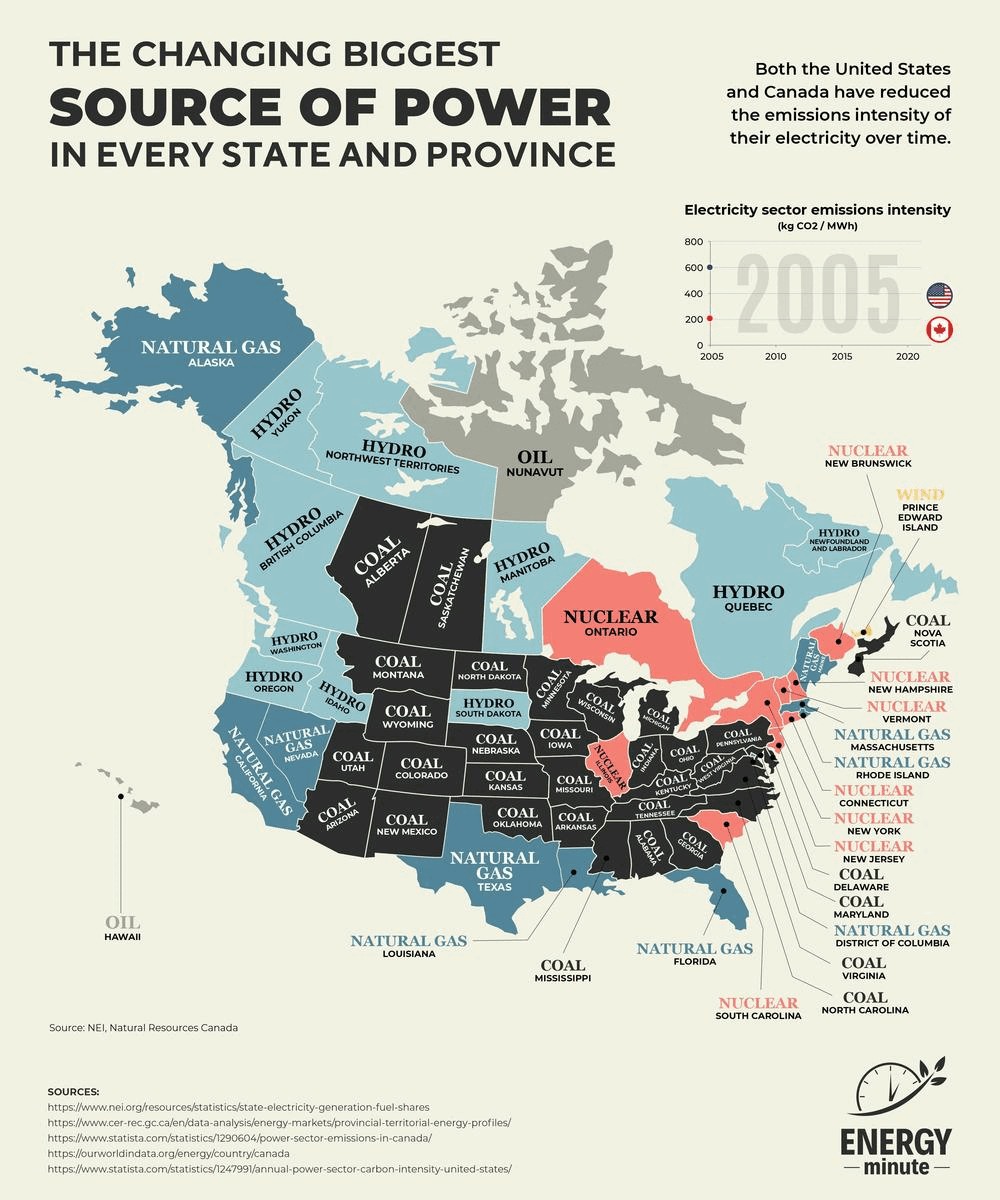How Canada and the U.S. Reduced Their Electricity Emissions

Over the past two decades, both Canada and the United States have made significant improvements on the emissions intensity of their electricity sector. The United States has reduced its emissions by 42% since 2005, while Canada has reduced by 37% over the same period.
United States
The emissions intensity of the United States has decreased over the past 20 years, meaning that the amount of greenhouse gas emissions per unit of economic output has decreased. This trend is largely due to a shift towards cleaner and more efficient technologies, as well as increased use of renewable energy sources.
According to the U.S. Environmental Protection Agency, greenhouse gas emissions per unit of Gross Domestic Product (GDP) decreased by about 50% between 1990 and 2020. In 1990, the emissions intensity of the U.S. was 640 metric tons of CO2 equivalent per billion dollars of GDP, while in 2020, it was 319 metric tons of CO2 equivalent per billion dollars of GDP.
This decrease in emissions intensity can be attributed to a number of factors, including increased energy efficiency in buildings, improvements in industrial processes, and a shift towards cleaner fuels such as natural gas and renewable energy. Additionally, some states have implemented policies to reduce emissions, such as renewable energy mandates and carbon pricing programs.
Canada
Canada’s greenhouse gas emissions intensity has decreased over the past 20 years, albeit at a slower rate than some other industrialized countries. Emissions intensity refers to the amount of greenhouse gas emissions generated per unit of economic activity or output.
According to Environment and Climate Change Canada, the country’s emissions intensity in 2005 was 0.31 kilotonnes of carbon dioxide equivalent (kt CO2e) per thousand dollars of gross domestic product (GDP). By 2019, the emissions intensity had decreased to 0.17 kt CO2e per thousand dollars of GDP, representing a reduction of about 45% over the period.
Canada is still facing significant challenges in reducing its overall greenhouse gas emissions to meet its commitments under the Paris Agreement. The Canadian government has set a target of net-zero emissions by 2050 and has implemented various policies and measures to reduce emissions from various sectors, including transportation, industry, and buildings.
Sources:
https://www.statista.com/statistics/1290604/power-sector-emissions-in-canada/
https://ourworldindata.org/energy/country/canada
https://www.statista.com/statistics/1247991/annual-power-sector-carbon-intensity-united-states/
https://www.nei.org/resources/statistics/state-electricity-generation-fuel-shares
https://www.cer-rec.gc.ca/en/data-analysis/energy-markets/provincial-territorial-energy-profiles/




